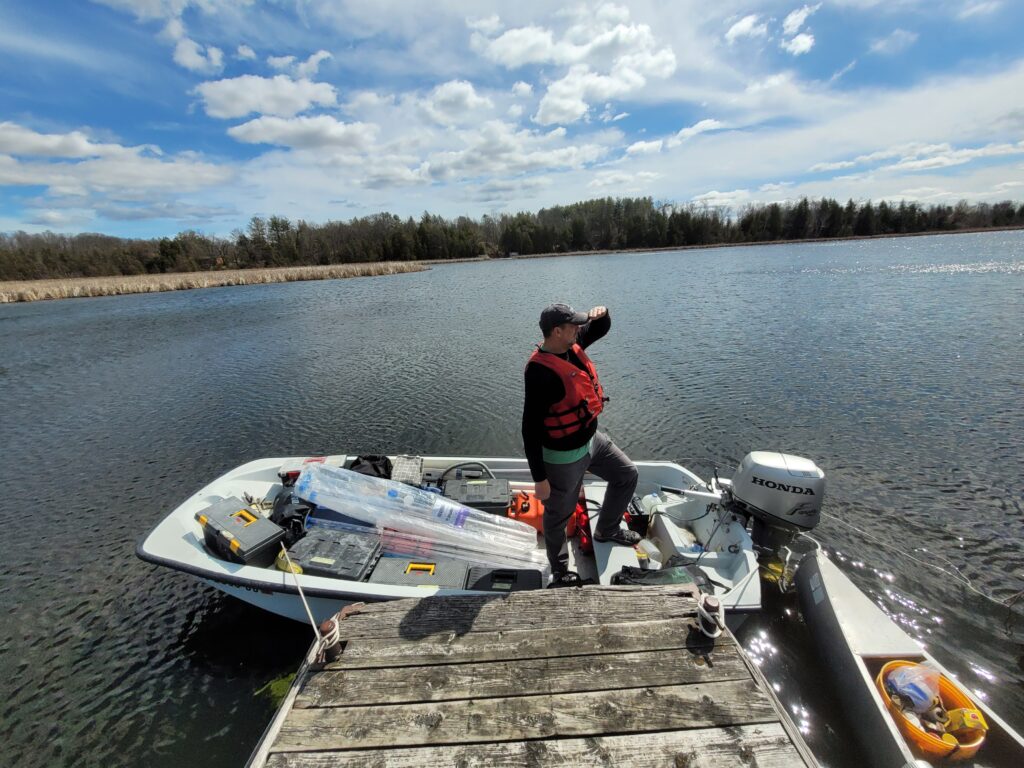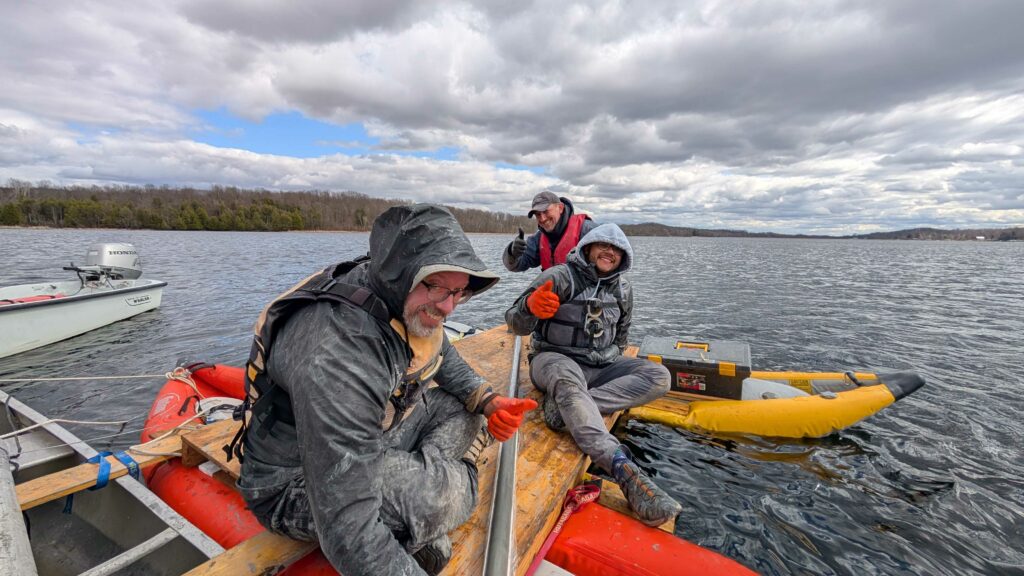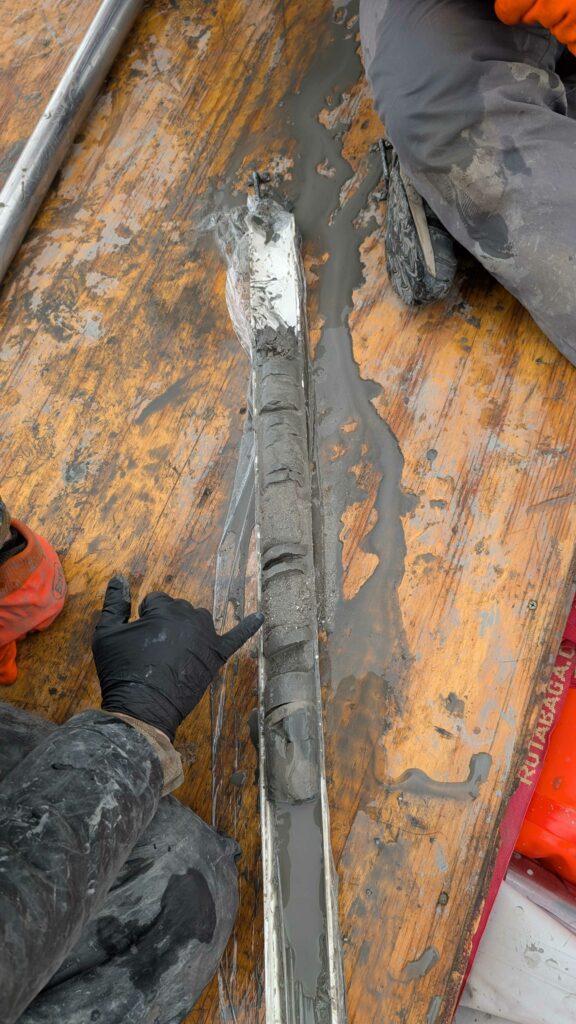For most of us, summer camp is a fond memory. Adventures, campouts, popsicles, lazy days floating on a lake… it’s all in the distant past.
For graduate student Eric Giese, it’s a much more recent experience. In summer 2025, Giese spent a good chunk of time at Camp Long Lake, talking to Scouts about geography, geology, anthropology, geoarchaeology, and more.

To understand how he got there, you have to understand two things: first, that Giese is an Eagle Scout himself. And second, that Eric has a long research history with Long Lake, one that stretches back to his undergraduate years.
Long Lake is a narrow, 423-acre lake in Fond du Lac County, Wisconsin, stretching 2 miles long. On average, it’s just a quarter of a mile wide, but its depths reach 47 feet. To the layman’s eye, it looks just like any other lake in Wisconsin—boaters and swimmers in the water and a shoreline packed with trees and summer cabins.
But Giese? “I had a hunch,” he says. His hunch (without giving away too much about his in-progress master’s thesis, which he plans to defend this fall) was that Long Lake is actually very different from other Wisconsin lakes. To him, it looked more like a glacial outwash stream, suggesting that it dates back to the end of the Ice Age. If so, that would make Long Lake globally rare—its sediments may help us reconstruct the basin’s environmental record for the last 16,000 years, or even older, when glaciers covered the nearby landscape.
He started working on this hunch during his undergraduate studies at UW–Oshkosh. There, Giese extracted an exploratory core, drilling into the lakebed and bringing that sample to the UWO labs. There, he examined the sediments and applied for a grant to get a radiocarbon date, which confirmed that Long Lake is older than the other lakes around it. That work helped earn him his spot in the UW–Madison Geography graduate program, working with Professor Jack Williams.


In the summer of 2023 and spring 2025, Giese and Dr. Williams returned to Long Lake, pulling deeper and deeper cores to support work on his master’s and PhD theses, respectively, which aim to give us a view of how the land in and around Long Lake changed after the end of the last Ice Age. That could open up a new world of paleontological possibilities in Wisconsin.
“It’s amazing to have this unique lake in our backyard,” Giese explains. “There’s huge potential for all UW colleges to do research that’s easily accessible.”
So where do the Scouts come in? Well, the sediment coring team from UW rented cabins at the Scout camp during their coring fieldwork, and, as an Eagle Scout, Giese saw an opportunity. He called up the Potawatomi Area Council and said he’d love to give talks.
The council and Camp Long Lake responded with an enthusiastic yes. For seven weeks this summer, Giese gave hour-long talks, helping many scouts each week achieve partial fulfilment of their Geology scouting badge. His main goal: showing the Scouts how to look at the surrounding area with a curious and scientific eye and then helping them understand how a geologist would use their tools to interpret the landscape.
“I wanted them to understand how to fit puzzle pieces together,” Giese says. He explained the methods he would use—remote sensing, deep cores, observation—and how geologists, geographers, and anthropologists can all combine their knowledge and fieldwork to create a larger interdisciplinary understanding of the past.
The Scouts loved the talks, and so did Giese—he and the Scouts plan to continue his talks at the camp next summer, making more connections and getting more kids excited about geography and geoarchaeology.



